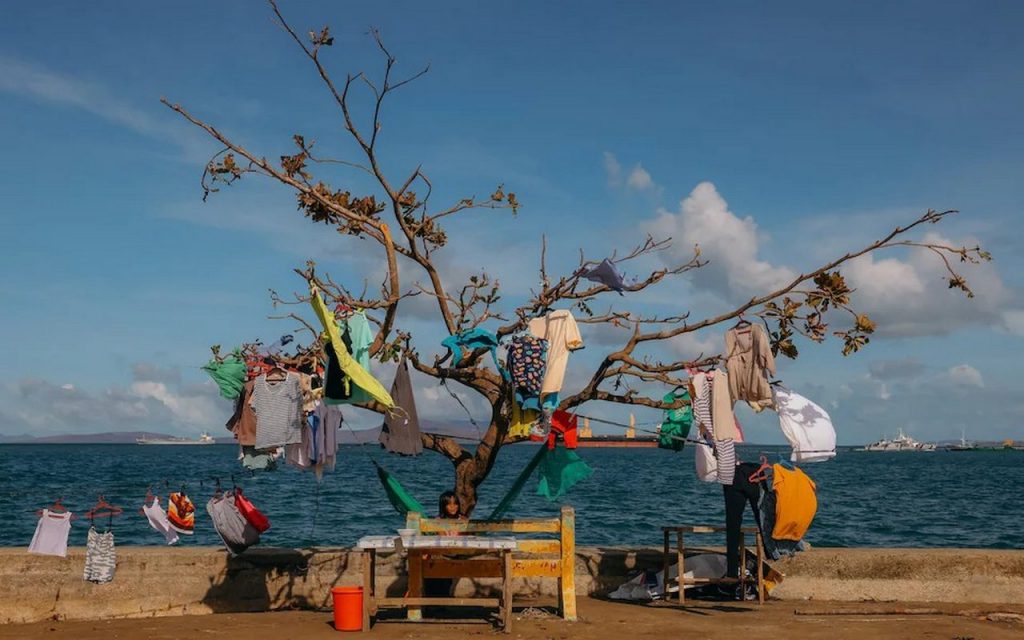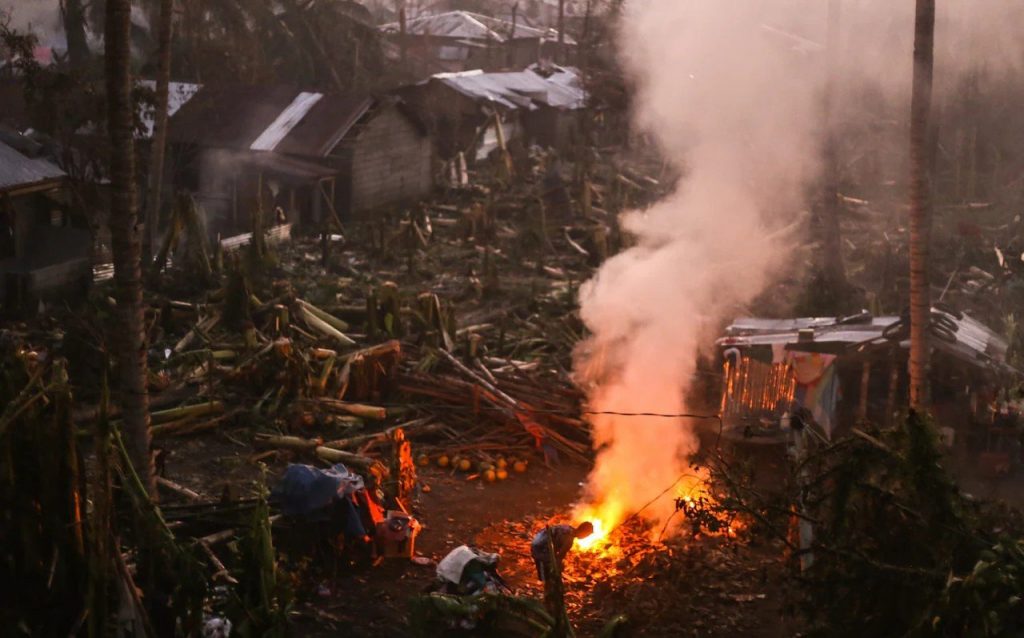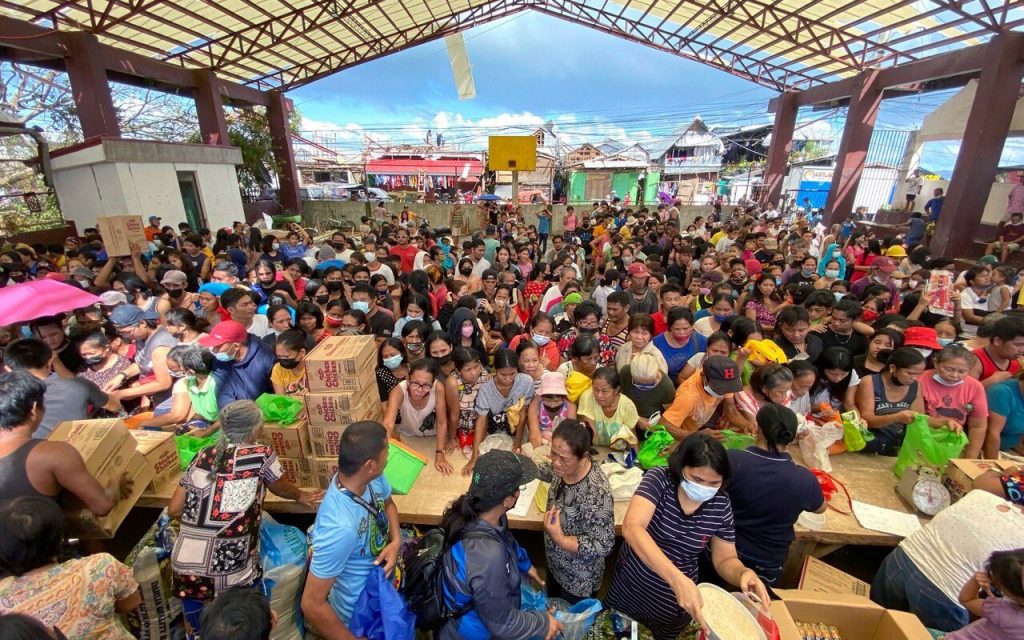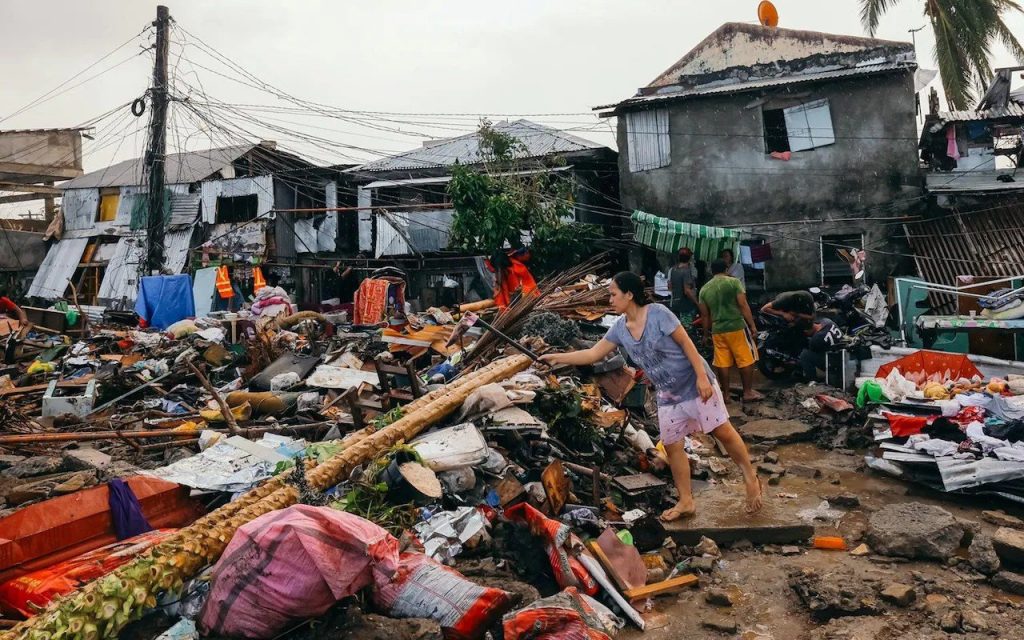Deadly typhoon is the strongest the archipelago has faced this year, with peak winds reaching 146mph
At least 375 people have been killed after a devastating typhoon tore through the Philippines, causing “complete carnage” and leaving over 630,000 seeking shelter in schools, churches, and camps ahead of Christmas.
Typhoon Rai, which hit the country last week, is the strongest the archipelago has faced this year, with peak winds reaching 146mph.
It has left chaos in its wake, with roughly 2.2 million people directly affected – meaning livelihoods and homes have been destroyed, family members lost and health access curtailed. The numbers known to be dead or injured are increasing, according to the Red Cross.
“The fury of this typhoon is something we have not seen for years,” lberto Bocanegra, the head of the delegation of the Philippines Red Cross, told the Telegraph, adding that some areas will not see a return to relative normality for more than a year.
The typhoon struck as the country was finding its feet after the coronavirus pandemic. The Philippines had been one of the hardest hit by the virus in the Asia-Pacific region, recording over 2.8 million cases and more than 50,000 deaths.

But in recent months, vaccinations had ramped up – with 51 percent of the population receiving one jab – and Covid-19 cases were decreasing.
Mr. Bocanegra said officials are concerned that the destruction of services and infrastructure could see cases spike once more. In the past few days, the country saw its first reported cases of the omicron variant.
Mr. Bocanegra also expressed the frustration felt by millions across the majority Catholic country who had been gearing up to celebrate Christmas together. “There’s great sadness, a great frustration,” he said.
Emergency teams are reporting “complete carnage” in the coastal areas, as homes, hospitals, livelihoods, and school and community buildings have been “ripped to shreds”.
Communication lines remain down, hampering relief efforts and meaning many families are unsure about whether loved ones have survived. Some regions are completely inaccessible due to landslides and mudslides.

Nine different islands, separated by a distance of more than 800km, sustained ferocious winds and floods, which first hit the country’s southeast coast on Thursday.
At least 375 people have died, making it the deadliest tropical cyclone in 2021. According to the United Nations, 630,000 people are now displaced, while in some areas the roofs of 95 percent of homes have been ripped off.
“Food supply is running low. Maybe, in a few days, we will totally run out,” said Fely Pedrablanca, the mayor of Tubajon town on Dinagat Island. She added that only nine out of more than 2,000 homes in her town are standing.
Over 200 areas have suffered power outages – and only nine percent have been restored. It is estimated that some cities may be without electricity for up to three months. Banking systems are also down, meaning locals are struggling to access cash.

A pre-emptive evacuation saw 376,000 people moved to stronger buildings before the first winds hit. But, as the Philippines is an island nation, it is “risky” to move people further afield to safety – for example to other islands by boat – said Dr. Liz Stephens, professor of meteorology at the University of Reading.
Dr. Stephens said that while the typhoon was predicted a week in advance, the intensity of the storm was not.
“The storm underwent rapid intensification – increasing by 30mph in 24 hours. This is very difficult to predict, and we can’t provide warnings to people in time so they can get out of harm’s way,” Dr. Stephens said.
Rapid intensification is a “great and increasing cause for concern,” occurring more frequently in recent years, Dr. Stephens added.
“Climate change will continue to make storms more intense in the future. Warmer seas mean more energy is created,” Dr. Stephens said. “And we’re starting to see that already.”

This year tropical cyclones have formed in six major bodies of water. Hurricane Ida, which hit Louisiana in the United States in the autumn, is estimated to have caused $65 billion in damage.
Meanwhile, on Tuesday, the Malaysian military was deployed to distribute food to desperate people trapped in their homes after massive floods hit, leaving over 70,000 displaced.
Days of torrential rain triggered some of the worst floodings in years across the country, swamping cities and villages and cutting off major roads.
Some parts of the state capital Shah Alam were still underwater Tuesday, and military personnel in boats distributed food to people stuck in their homes and government shelters.

 Alghadeer TV Alghadeer TV
Alghadeer TV Alghadeer TV
